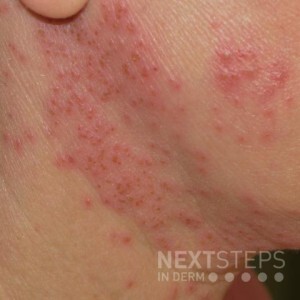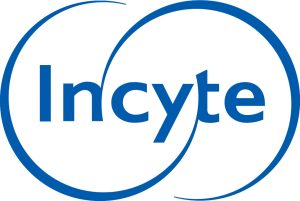
The correct answer is A. Eczema herpeticum.
Eczema herpeticum is a secondary infection that occurs in patients with atopic dermatitis. It is readily identified by monomorphic punched out erosions occuring within areas of eczema. Intact vesicles are less commonly seen. The treatment involves systemic antivirals as well as continuation of topical steroids.
Bacterial and viral infectious are more commonly seen in patients with atopic dermatitis due to imparied skin barrier.
Impetigo is caused by staph aureus and clinically characterized by honey crusting. Patients with atopic dermatitis are colonized with staph aurues and are at risk of secondary impetiginization. Bleach baths are an effective component of maintenance treatment to prevent infection.
Varicella (chickenpox) is characterized by lesions in various stages of evolution. It is caused by the varicella-zoster virus.
Molluscum contagiosum is a benign and self-limited cutaneous infection caused by the pox virus. The characteristic lesion is a dome shaped papule with central umbilication. Molluscum contagiosum can occur in areas of active atopic dermatitis.
Verrucae are another benign and self limited viral infection caused by the human papilloma virus. They have a hyperkeratotic surface and thrombosed capillaries may be visible as black dots. They do not erode or ulcerate.
Brought to you by our brand partner

